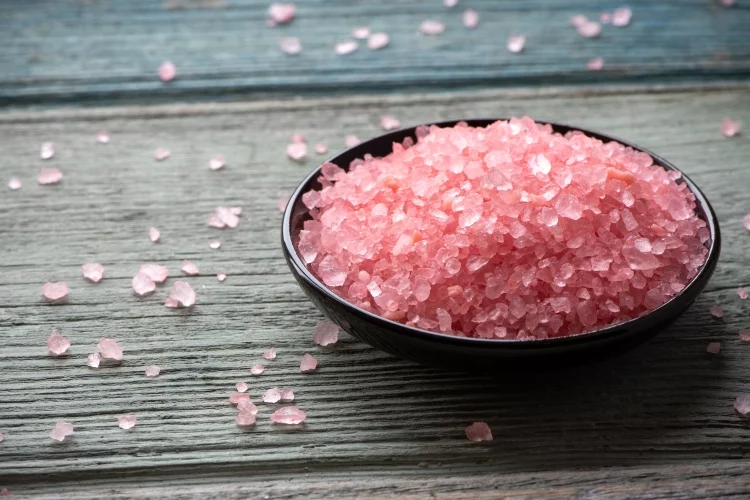by Rick Goldman
Salt, as the saying goes, is the difference between eating in Technicolor, and eating in black and white. A basic staple in every dish and work so quietly - there must be something strangely sacred in it. You barely notice its presence, unless it's missing or given in excess quantity.
Salt seasons, purifies, preserves, however, it's my painful duty to remind you that salt also irritates, if not stored properly. Now, you might ask, why I need to store it - well, you can't just go out to buy salt each time, when you are about to cook.
In every kitchen you would find a salt cellar with spoon or salt container with lid, since they are the best way to keep salt dry and fresh. However, there are some useful tricks that could come handy in storing salt in the kitchen and keep moisture out of it.
Contents

Rice is one of the most widely consumed staple food in the world, especially in Asia and African continent. But, not too many us aware about moisture absorbing capability of rice. It is a hygroscopic material and when exposed to environment with high relative humidity, dry rice starts to absorb moisture from the air.
Therefore, adding a few grains of dry rice into the salt shaker will get the job done. Depending on how wet the salt happens to be, decide how many grains you need to add. Be sure that the rice mingled properly with the salt. If not, either use a spoon to mix or seal the container and shake it up manually.
You can take those grains out if you would like to, once the salt is dried enough. However, in most cases, people tend to leave them in, since it doesn't have any impact on salt and rice hardly absorbs enough moisture to change color or texture. The best practice would be adding long rice grains to prevent them from coming out of the shaker.
Arguably the main source of caffeine for the world population. A sip of this brewed drink can reignite your liveliness after a hectic day. Surprisingly, coffee beans do the same with damp salt. And, it's highly likely that you too have a jar full of coffee stored somewhere in your kitchenette.
Pull it and do the magic. Grab an airtight container, fill its bottom one fourth with some fresh and dry coffee beans, and then pour the salt directly into the container over the coffee beans. You are done.
Coffee known as a natural absorber of moisture and will lift the water out of the salt. Don't get anxious if you notice any clumping at the bottom. It may happen, but the rest in the container will be perfectly dry and fresh.
The idea of adding aroma into salt might not that popular, but trust me, it tastes better. We are not suggesting you to buy flavored salt. Rather, making you aware that parsley leaves have a pleasant aroma and as a by-product of keeping the salt dry, you are going to taste that.
In addition to infusing aroma, these leaves keep salt from drawing moisture and hardening into chunks. Bring parsley leaves home, let it dry if not already dried, and fill up the bottom of the container, at least one fourth of it. If you intend to enhance the aroma even more just dice the parsley before adding it. When you get to the bottom, replace those parsley's with new ones.
Should you are hypersensitive about flavor or aroma, dry kidney beans are the solution to keep your salt dry. Absorb moisture slowly, dry beans may not be the answer for salt that are soaking wet, however, a great choice for salt that happens to be a little damp.
Unlike parsley leaves these beans do not extract any additional flavor, but get the job done for you. Fill the container with salt, add some dry kidney beans, close it and shake until they mixed uniformly. Unusual clumping might take place on the surface. If so, just leave these beans on top of the salt.
For those who are unwilling to make some extra effort, just keeping the moisture out will work just fine. Choose a container, which is airtight instead of a salt shaker. Small holes on top of the shaker will let moisturized air in and do the damage.
However, if a shaker by any chance unavoidable, wipe off the surface regularly so that clumps couldn't form on the holes. Letting that happen will actively draw in more moisture and turn the situation even worse. Besides, storing salt in a cool as well as dry place will yield better result.
Regarded as the policeman of taste, salt makes a big difference in food. People with a medical condition that doesn't allow them to eat salt know how painful it is to eat salt-less diet. It plays a significant role in keeping various flavors of a dish in order and restraining the stronger from tyrannizing over the weaker.
Nevertheless, it's important to prevent it from becoming an irritation in the kitchen. You just don't want to turn up in the kitchen to see the spoon in the salt jar consolidate entirely into the salt; one thing for certain. Try the above mentioned methods out to keep moisture from building up in your shaker over time or to keep the salt dry.
 |
 |
 |
 |
 |
 |
 |
 |

About Rick Goldman
Rick Goldman's grandpa was a captain of a California coast cruise. This afforded Rick the luxury of traveling to exciting places along the Pacific Coast as a young boy. He got to try different, exotic foods on these journeys - something he really enjoys blogging about from his grandpa's beautiful garden home today.
Check for FREE Gifts. Or get our Free Cookbooks right now.
Disable the Ad Block to reveal all the recipes. Once done that, click on any button below
 |
 |
 |
 |